#AND A BABY WHALE
Explore tagged Tumblr posts
Photo
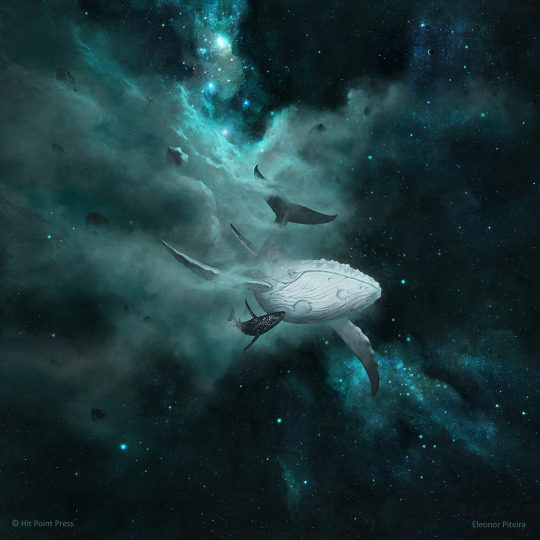
Celestacean I painted for Hit Point Press 🐋
#Celestacean#hit point press#illustration#space whale#space art#digital illustration#digital art#art only tag#I spent so many hours just making sure those clouds/nebula dust/whatever had the right flow#😭#'space whales' are probably one of the most cliché things on the universe but it was fun having a go at it!#plus: STARS!!!#AND A BABY WHALE
754 notes
·
View notes
Text
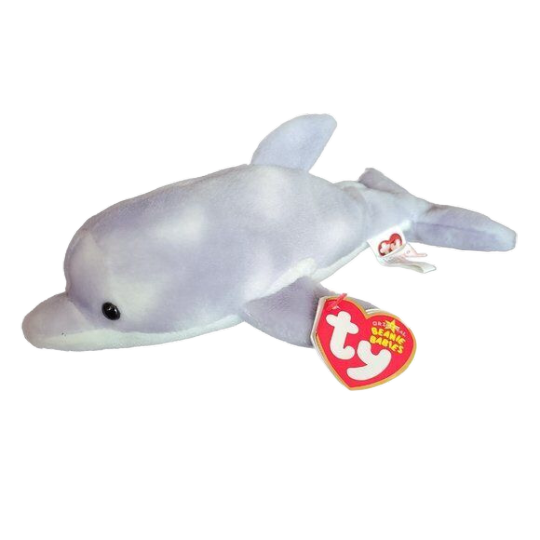


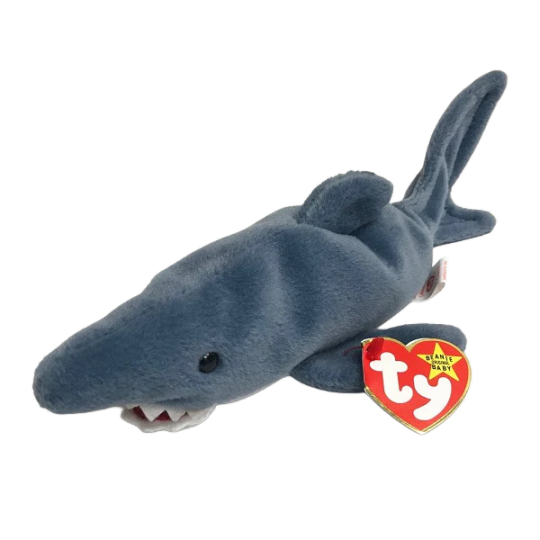

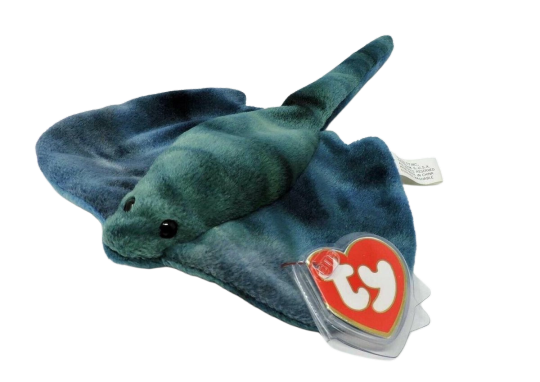
🌊 aquatic beanie babies!
beanie babies my beloved
#carrd#carrd png#f2u#png#pngs#rentry png#transparent#transparent png#soft toys#plush#plushies#plushblr#plushcore#kidcore#beanie babies#ty beanie baby#beanie baby#ty beanie babies#sea creatures#aquatic#shark#crab#dolphin#whale#fish
699 notes
·
View notes
Text
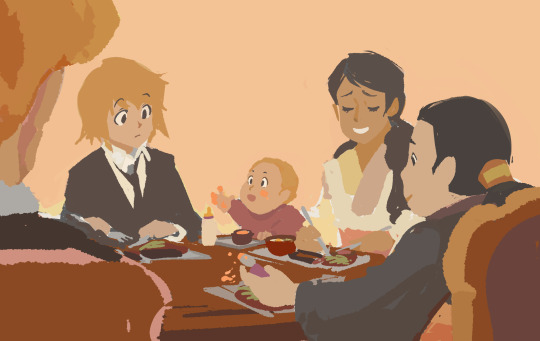
wip wednesdayyyyy because i liked this concept but cba to finish it nicely 😅
there's this one panel of shimano setting the table with maybe six or seven identical meals plus woble's baby food and bottle... pretty sure no one else is in 1014 besides oito, woble, shimano, and the guards at that point, so I think that means they all eat meals together? 🥺
#they eat together and eat the same food... i love 1014 squad#(also shimano has the baby spoon here because woble had thrown it across the table. not sure if that's apparent haha)#woble @ kurapika: can i offer you a nice carrot puree in this trying time#hxh#hunter x hunter#kurapika#woble hui guo rou#oito hui guo rou#shimano hxh#and the back of bill's head lol#i'd love to see more of some of the mundane parts of the black whale#like meal breaks and what the guards/staff do off-shift#i love when we get glimpses of the guards in their bunk beds and stuff like that
376 notes
·
View notes
Text
Humpback whales, by oceanicexpeditions
389 notes
·
View notes
Text

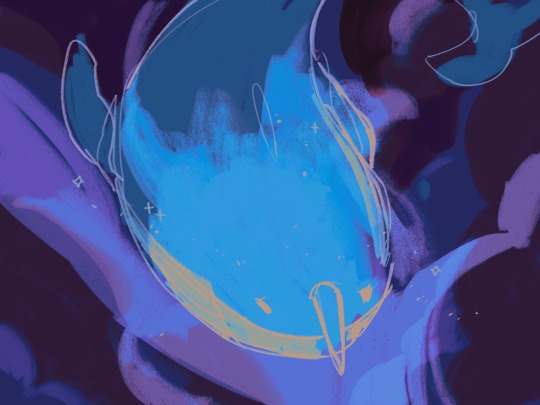
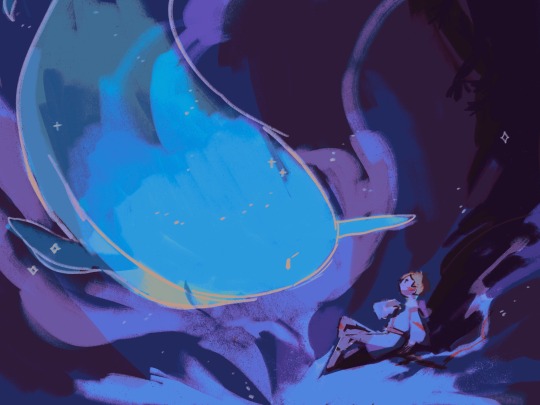
encounter in the abyss
#genshin impact#childe#tartaglia#ajax#when he was still a baby#also before i knew what that whale looked like#just a lil sketch for my brainrot
1K notes
·
View notes
Text
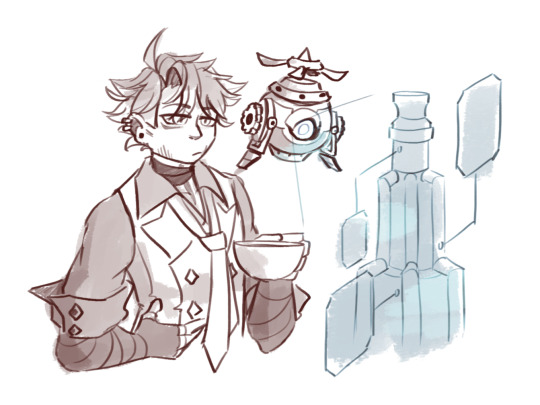

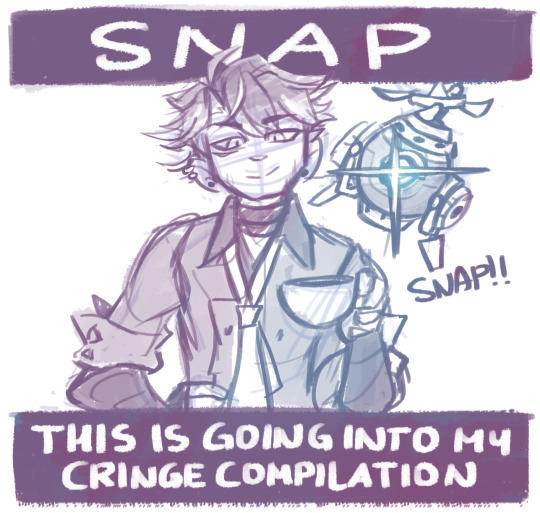
Celebratory doodles because Wheatley came home last night 🎉🎉🎉
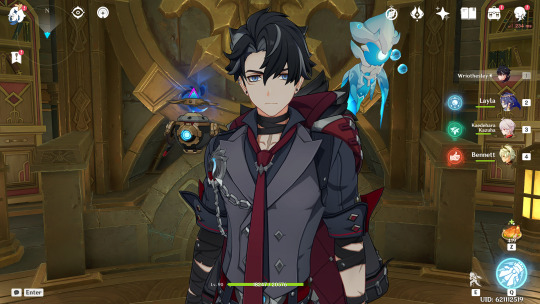
#babys first time whaling#worth 👍#dont try this at home im a simp ok#i call the thing either orb or wheatley#hc that wrio calls it flo#and it acts like mehrak for kaveh#you cant make me say otherwise#lyss' sketch#genshin impact#genshin fanart#wriothesley#sigewinne#fontaine
608 notes
·
View notes
Text
Mermay Special Prompt 4
Go on vacation, they said. We can watch Gotham, they said. Just go hang with and adjust to caring for kids, they said. Yeah, well no one said anything about getting cursed while at the vacation lake house, which okay, fine. But did it have to affect the kids too?
Bruce pressed his head in his hands, groaning in dismay as the children practically zoomed around the surrounding water with enthusiastic trills and squeals he could somehow understand. And through the air, to their increasing delight. Okay. Okay this is fine.
It wasn’t like he also somehow now had an extra child who looked like one at most that he had no clue as to where they came from. Said child wasn’t squirming in his arms, black scales and tiny fins akin to the setting of a sun twisting as they chirped. Definitely not.
Okay. Alright. He could figure this out. Probably…. hopefully…
#Prompts#DCxDP#DPxDC#SpaceMer Curse Au#De aged Dan#They’ll figure out how to shapeshift eventually#Why yes they can eventually turn into space cetaceans#Liminal Batfam#Bruce is a big star orca-thing#Dick is like an aurora dolphin#Dan himself is baby sun whale#Yes Dan & Duke are sun buddies#Clockwork looking at Battinson with several vigilante literal-children who he loves a lot:#Clockwork: *Yeets a Dan & a magic ‘gift’ at them*#Clockwork: Everything is as it should be :)#The kids are having fun & already planning mischief while Bruce is having the dial up sound in his head#Hopefully no time traveler tries to go after Baby Dan because Surprise: That is the youngest bat now#Damian: My baby brother to look up to me & be a minion you cannot have them >:|#Shadow Core Bruce- Killer Whale Inspired#Earth Core Barbara- Sperm Whale Inspired#Storm Core Dick- Striped Dolphin Inspired#Light Core Cass- Vaquita Inspired#Star Core Jason- Humpback Whale Inspired#Sea Core Steph- River Dolphin Inspired#Wind Core Tim- Beluga Whale Inspired#Sun Core Duke- Common Dolphin Inspired#Shadow Core Damian- Minke Whale#Sun Core Dan- Commerson’s Dolphin Inspired#but feel free to ingore
270 notes
·
View notes
Text
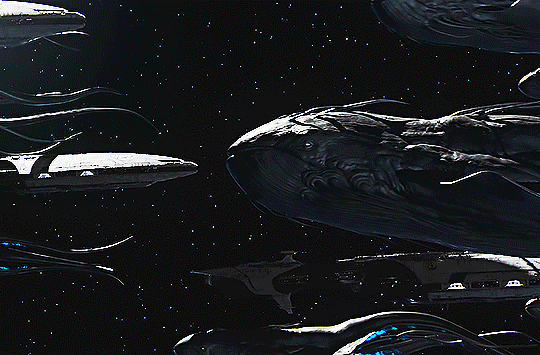

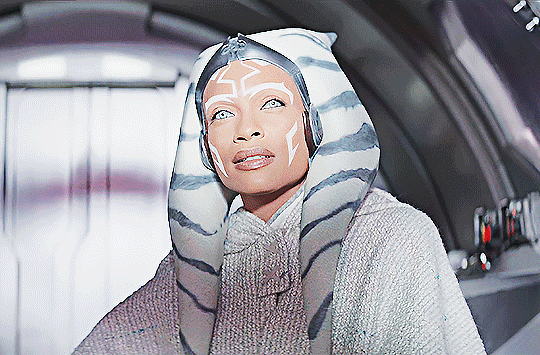

Maybe Grogu knew
#ahsoka#ahsoka spoilers#the mandalorian#ahsoka tano#grogu#rosario dawson#baby yoda#star wars#purrgil#space whales#maybe grogu could tell ahsoka was there#my edits
575 notes
·
View notes
Text

Some sketchy concept stuff that I'm posting because I liked it but couldn't be bothered to refine it into an actual artwork.
These submarine behemoths are the Mermares (Clade Euhippocampiformes), secondarily aquatic descendants of the domestic donkey. The group first appeared around 29 million years post-cataclysm, in the late Nerian stage of the Diluvian period. They evolved from an animal called the Seabra, a descendant of the Donkey which adapted to exploit a niche with, thus far, zero competition - that of a large marine herbivore.
On earth, marine ecosystems are notable for the distinct lack of vascular plant life, a condition caused by a number of factors - most notably the osmotic stress caused by the saltwater. Most photosynthesis is carried out by algae. On Spero, however, things are different. Because Spero's oceans were generated relatively recently, from extraterrestrial ice particles, there just hasn't been enough time for erosion and the water cycle to deposit dissolved minerals in the water. As a result, Spero's seas are made of freshwater - a much more tolerable condition for most plants, and thus the diversity of marine vascular plants is much, much higher than on earth. Also, due to the flatness of the flooded landscape and lack of any real tectonic features, enormous swathes of the seabed lie within the photic zone, less than 200 meters from the surface. Thus, endless expanses of marine grasslands - the "seagrass prairies" - extend from the shore, often for hundreds of miles before the water finally gets too deep for photosynthesis to occur.
All of this plant life is an extremely attractive prospect for herbivores, and it was likely what drew the ancestral Seabra to forage in shallow coastal meadows in the first place. But as the oceans got deeper and life adapted, the Seabra had to adapt in kind - their hind legs rotated backwards to act as a pair of propulsive flukes, their forelimbs developed into steering flippers, and their nostrils retreated to sit on their foreheads.
One notable feature of the Mermares is hyperphalangy, a condition where the fingers have too many bones. It's very common in large marine tetrapods in Earth's history - whales and dolphins, Ichthyosaurs, Plesiosaurs, and Mosasaurs all exhibited hypoerphalangy to some degree - and seems to be associated with the specialization of the limbs into flippers. We would expect to see similar patterns in marine lineages on Spero. What's unique about the Mermares, however, is the sheer number of extra phalanges in the finger; at least fifteen in the shorter-finned species, and more than thirty in the longest-finned forms. And because Mermares - being equids - only possess one digit per limb, the result is a single long chain of flat, squarish bones which, in some cases, can reach over forty feet long - the longest arms ever to exist.
These ridiculous appendages produce a lot of drag and are merely adequate for steering and stabilization. So why do the Mermares have them?
The answer is that they're weapons. And particularly devastating ones, at that.
Mermares use their flagellating flippers as bludgeons, against both predators and conspecifics. The flippers are connected to powerful neck muscles and can be swung forward with impressive force; combined with a well-timed twisting of the giant horse's torso, the huge flippers can impact hard enough to shatter bone and pulverize flesh. The flippers themselves do not escape unscathed, and older individuals often have scarred or mangled flipper-tips from numerous battles over the years; but it's a small price to pay for survival.
When not being used against their enemies, the flippers may be folded back against the sides of the animal to reduce drag, or used as props to keep the animal's belly up off the seabed when feeding. Mermares spend up to 18 hours per day grazing, using their long neck to crop aquatic grasses and other vegetation in a wide arc without moving their bodies and occasionally dipping up to the surface to breathe. Mermares are keystone species in the seagrass prairies; as hindgut fermenters, they are not as efficient at processing plant matter as ruminants like goats, and produce large amounts of nutrient-rich dung which acts as fertilizer for the meadows and helps keep the environment productive. The dung also acts as food for a variety of fish and invertebrates.
Let's look at some of the Mermare's diversity, shall we?
Drepanarion (center right) One of the smaller Mermares, Drepanarion nonetheless grows to nearly 12 meters (39 feet) long. It is immediately recognizable by the bold black-and-yellow striping on the heads and necks of the stallions, and by the tall, narrow nuchal crest which extends from the withers and makes the stocky body look even more powerful. Unlike most other Mermares, which live in small groups of less than ten individuals, Drepanarion can be found in herds of over a hundred in the seagrass prairies of the Savanian (41 - 50 million years post-cataclysm). These nomadic throngs graze patches of seagrass nearly to the roots before moving on, giving the ecosystem time to regrow before returning in a few years' time. Drepanarion exhibits the most extreme sexual dimorphism of any Mermare, with stallions being both larger and more brightly coloured than mares; during the annual rut, males will fight each other in brutal bludgeoning matches to establish dominance and secure mates. To this end, they have some of the most extreme flipper anatomy of any Mermare; though not especially long (indeed, they have the shortest flippers of any derived genera), each phalanx bone has a protruding bony tubercle on the anterior edge which extends into a keratinous knob. These knobs both protect the flipper during combat and focus the force of the blow into a smaller area, dealing more damage.
Hipposeidon (bottom left) First appearing in the early Imberian (50 million years post-cataclysm), Hipposeidon is the largest of all Mermares and, indeed, the largest animal ever to exist on Spero, with stallions regularly reaching over 24 meters (80 feet) long (mares are slightly smaller). Extremely large specimens may even reach 30 meters (100 feet), although this is rare. This ludicrous size - nearly rivaling even the mighty Blue Whale of Earth - is possible only due to the sheer abundance of its food. Hipposeidon appears at the height of the seagrass prairie's extent, and can pack away almost 900 kilograms (1900 pounds) of seagrass per day. This superlative food requirement has important consequences for Hipposeidon's behaviour; this animal is migratory. Seagrass prairies are extremely productive ecosystems, but nonetheless Spero is a seasonal world; as the summer growth gives way to the winter die-back, the greatest of the Mermares must migrate across the equator to seek out a continuous food source to fuel its immense bulk. In this way Hipposeidon experiences a perpetual summer, interrupted only by the biannual migration from north to south and back again. Female Hipposeidon are pregnant for about one year, timing the birth of the single large foal with arrival to the feeding grounds; the six-meter-long foal enjoys a long childhood nursing and playing in shallow summer waters, gathering strength before making the long swim across the barren tropical zone to pastures new.
Bathypegasus (top left) The last and possibly the weirdest of the great Mermares, Bathypegasus is the only member of the clade which is not a grazer. Instead, it is a specialist feeder on pelagic, free-floating ferns. These ferns are a seasonal bounty, growing in huge numbers in the tropical summers of the late Imberian (60 million years post-cataclysm), where the planetary ring system shades out large portions of the planet for half the year. A close relative of Hipposeidon, Bathypegasus has left its ties to the seabed behind, becoming a fast, powerful swimmer which spends most of its life far above the sea floor. Its flippers have adapted to be even more ludicrously long - the longest forearms of any animal, ever, with each one measuring nearly 14 meters (45 feet) in length and each containing at least 35 individual bones. No longer used to prop the animal up off the seabed, these whiplike flippers are narrow and streamlined and can be whipped through the water at speeds of nearly 20 meters per second (that's over 40 mph) - the most extreme weaponry of any Mermare, and used to great effect against predators. Bathypegasus, like Hipposeidon, is migratory, following the blooms of pelagic ferns across Spero's oceans. Thanks to this midwater diet it is the only genus of Mermare to survive past the mid-Imberian extinction, when rising sea levels and steepening coastal slopes caused the seagrass prairies to disappear. Bathypegasus finally died out in the Ultimoxerian stage, around 75 million years post-cataclysm, the last and weirdest of the giant marine horses.
#spec bio#spec evo#speculative biology#speculative evolution#Vicis Aeternum#Spero#seed world#equid#donkey#they're like if a whale and a horse had a baby and that baby was somehow also a diplodocus
864 notes
·
View notes
Text
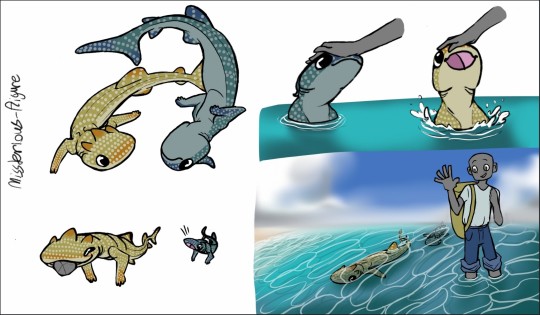
Litol Babu Sun and Moon :)
Some doodles of the boys as wee little things. They loved being small enough to swim close to shore and watch the locals at the beach. They got pets, played with kids, and checked out anybody wading in the water, etc. Such innocent fun...
Until the incident...
Quick note: I want to try and write this au! I have a basic story already, but I want to try to do it in a "decision/consequence" sorta way. I'll try to have two links, one for the end of each "chapter" as a what if sorta thing. Some "decisions" might lead to the same ending. But if I do do this, it will probably take a really, really, REALLY long time to update. (I have other aus I'm working on, namingly swamp things au)
I would love to hear some feed back and opinions about this!
#fnaf dca#dca au#dca sun#dca moon#dca mer au#whale shark sun#whale shark moon#baby fishies#digital art
151 notes
·
View notes
Text


Whalemack!
He’s a gray/grey whale, very nice and VERY big (though about half the size of a blue whale). He’s been mostly solitary for a while, sometimes joining other whales on their migrations, but then he starts collecting little mer children that make travel hard. I’ll probably add some scars from boats/etc to this design. And we need to figure out if mers have tattoos 🧐
#hello half dolphin/half whale Kevin#ahem#yeah the little unmarked thing at the top of the size comparison chart is me figuring out exactly how small a basking shark pup should be#there is a certain little lost basking shark baby that Wymack finds floating dangerously in the middle of the ocean#so he takes him and carries him while he sleeps#and after that the shark kind of swims in and out of his care#little thing’s got a habit of slipping away from him#(until he can’t)#but this is for another post that I’m publishing in like three seconds#or like three minutes#ANYWAY#whalemack can carry all his kids at once#big strong dad#fan art#my art#aftg#all for the game#david wymack#mer au#oops all mers au#whalemack#mer research notes
529 notes
·
View notes
Text
Crew of the Pequod. Precious baby boys. You are all hearing "half-articulated wailings of the ghosts of all Herod’s murdered Innocents" that could be mermaids, could be the souls of the newly-drowned. Your shipmate on lookout for the white whale has just plunged to his death from the mast. You've had to replace your life-buoy with a coffin.
RUSH YOUR CRAZY-ASS CAPTAIN, THROWN HIM OVERBOARD, AND TURN THE EVERLOVING BOAT BACK AROUND!!!
#i have been reduced to screaming horror movie style at these characters in a 1851 novel#the building dread is so intense#baby boys save yourselves!#whale weekly#moby dick
84 notes
·
View notes
Text
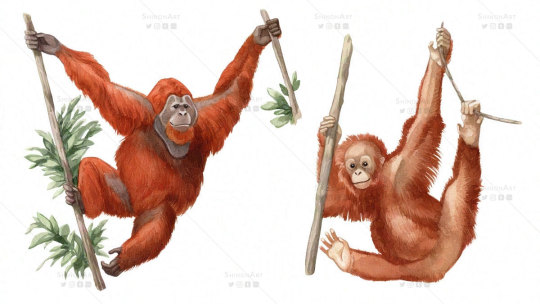
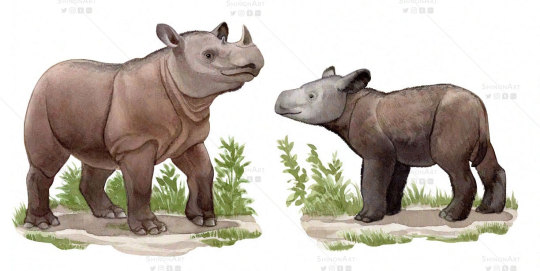

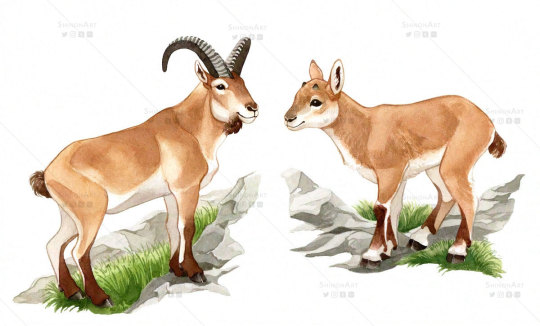


I recently illustrated a memo game "Endangered Animal Babies" for Treecer. This memo game contains 72 unique illustrations and 36 endangered animal species. Each pair consists of the parent and the baby animal and all the illustrations were done in watercolor.
I'm really grateful for this opportunity and very happy with the outcome of the game! The game is sold by WWF Finland and Treecer at the moment.
SET 1| SET 2 | SET 3 | SET 4 | SET 5 | SET 6 | SET 7
#artists on tumblr#traditional art#watercolor#traditionalart#traditional#animal art#wildlife art#primate#pygmy hippo#tiger#big cats#baby animals#vaquita#whale shark#west caucasian tur#sumatran rhino#rhino#sumatran orangutan#orangutan
205 notes
·
View notes
Text


Leg tat reveal + a cute outfit! (Close up of tat under the cut ⬇️)

#me#alternative#alt#alt girl#baby goth#goth#midsize#soft goth#emo#emo girl#bi#bisexual#lgbtq#goth girl#goth gf#small tiddy goth gf#curvy girls#chubby girls#curvy and cute#cutie with a bootie#body positivity#tattoos#redhead#glasses#girls with tattoos#leg tattoo#ootd#alternative ootd#whale tattoo#girls with tummies
57 notes
·
View notes
Text
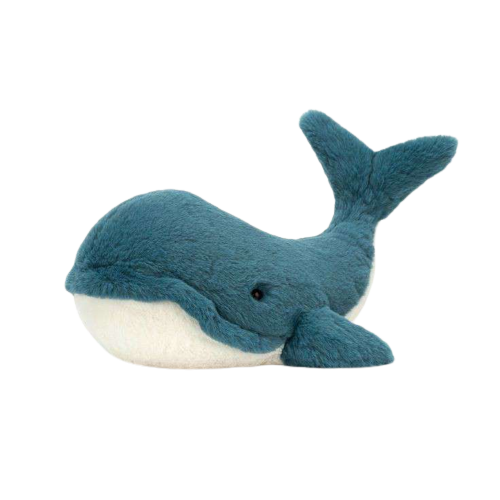
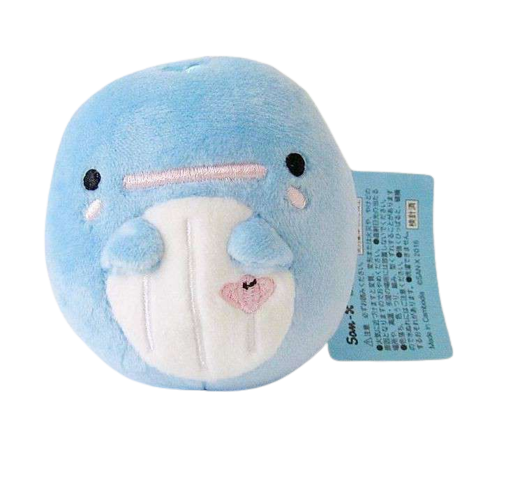
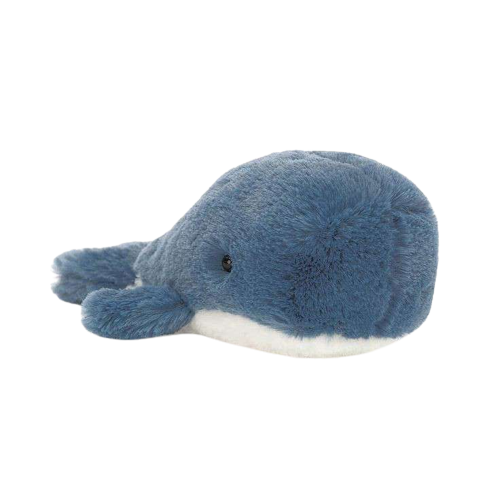
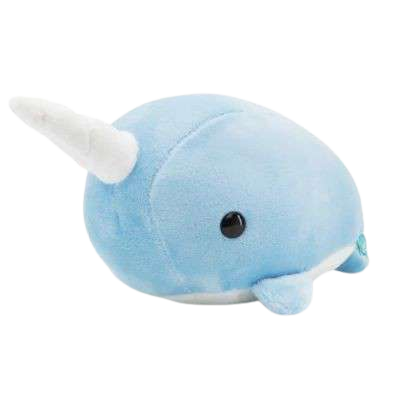
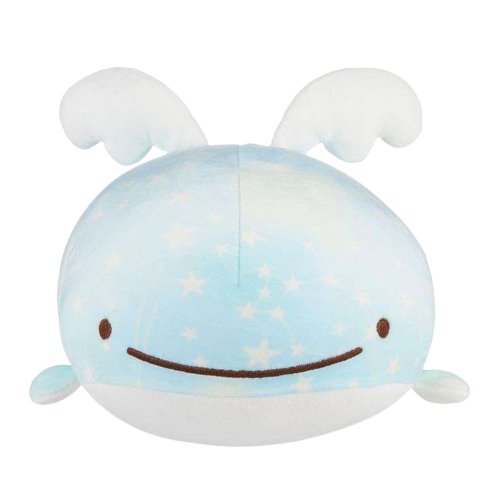
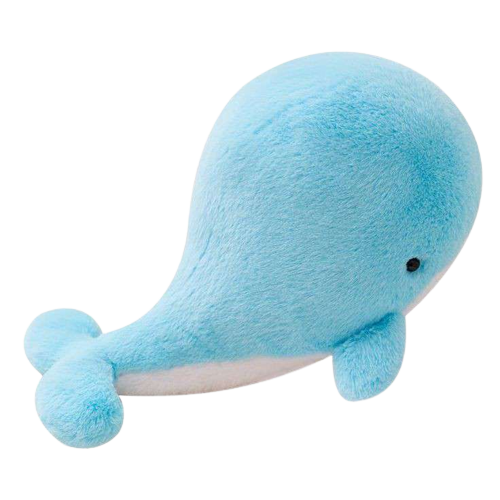
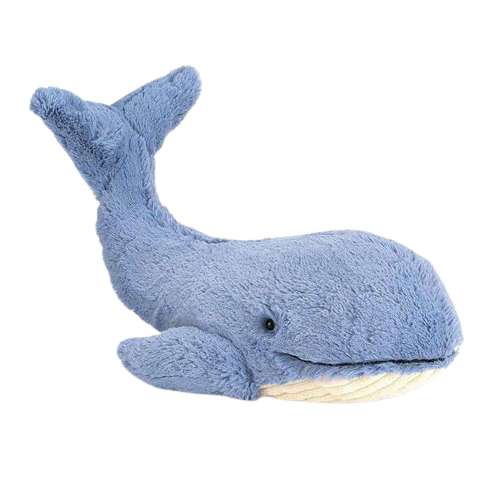
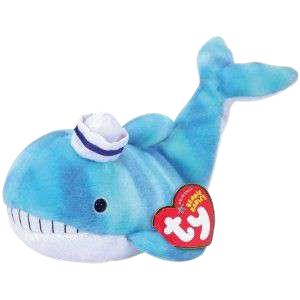
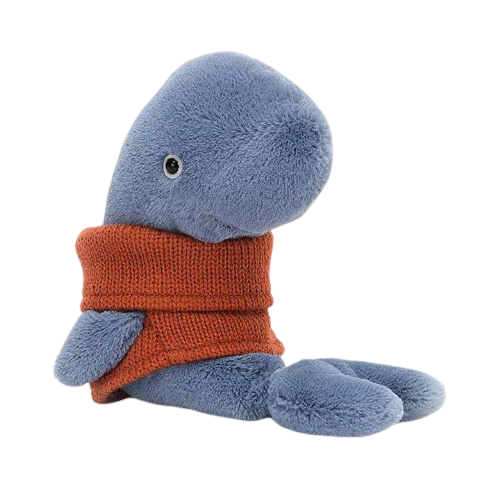

#plushie#cute#agere#age dreaming#age regression#agedre#system little#stuffie#little#stuffed animal#blue#teal#jellycat#stingray#whale#narwhal#beanie baby#png#transparent
367 notes
·
View notes
Text
I, for one, fully support trans illegal immigrants in prison who need operations 😌
#i cant believe he even said that lmao#feels like the ''abort gay baby whales'' thing lmao#anya rambles#us presidential election#2024 presidential race#presidential debate#politics#political
48 notes
·
View notes